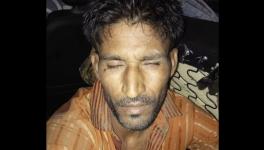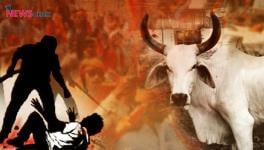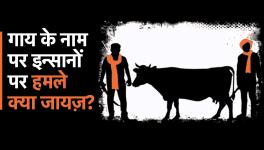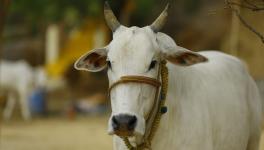A Saga of Police ‘Inefficiency’ and ‘Cover-up’: How Cops are ‘Protecting’ the Murderers of Pehlu Khan
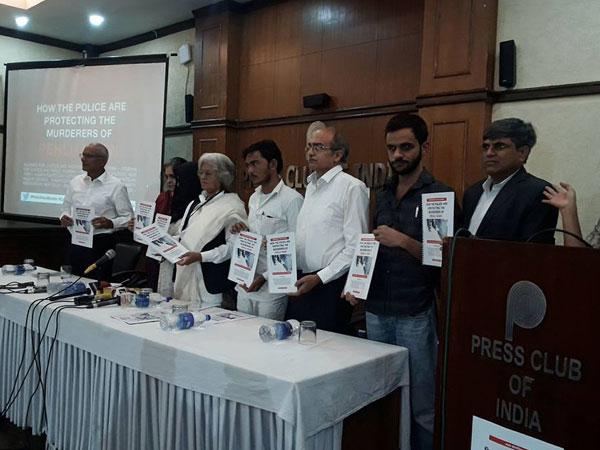
Civil society groups comprising legal luminaries and activists are set to challenge a “cover-up” and the clean chit given to the six accused of the Pehlu Khan lynching case that took place at Behror in Alwar district of Rajasthan on April 1, this year, in court.
They said they will form a group of lawyers, activists, individuals and fight for the 30 cases of lynching across the country.
While releasing a fact-finding report in the national capital on Thursday to establish their allegation of cover-up, they said their independent investigation into the lynching of the dairy farmer by cow vigilantes has exposed how police tried to “weaken” the probe by “delaying filing of the FIR and invoking IPC sections of crimes with lesser punishment”.
They termed the police action as “monumental inefficiency” or a “deliberate attempt to weaken the cases against the accused gaurakshaks (cow protectors)”, who according to them are “storm troopers” from Hitler’s Germany.
Khan (55), a resident of Jaisinghpur village in Haryana, was lynched to death by cow vigilantes while he was returning home after purchasing two cows and two calves from a Jaipur cattle fair.
The murder caught national attention and Khan became the face of protests against the spate of lynchings across the country in the name of gauraksha or cow protection.
Below are the loopholes that have been highlighted in the report:
1. The alleged cover-up begins with the First Information Report (FIR), which says that the attack took place at 7 pm and continued till 10 pm on that fateful day. The police registered an FIR at 4:24 am on April 2 after a delay of nine-and-a-half hours, even though the crime scene was only 2 km from the police station.
The FIR claims the police were informed of the attack at 3:54 am. Interestingly, the FIR contradicts itself on when it received the information. Khan, in his statement given to the police before his death, said that the cops rushed him and other victims to the hospital (Kailash Hospital) from the scene of the crime on April 1. The “final report” that the police filed on May 31 (with the charge-sheet in the court of Additional Chief Judicial Magistrate (ACJM) at Alwar district’s Behror tehsil, the jurisdiction in which the crime occurred), records that Khan gave his statement to the police at 11:50 pm in the hospital, the same night following the attack.
Now, the question is: if the cops learnt of the incident at 3:54 am, as mentioned in the FIR, how did they bring the victims to the hospital and record his statement previously at around 11:50 pm?
2. If, as the victim claimed, the cops were present at the crime scene and took him to the hospital, why does the FIR not mention the names of the policemen and why weren’t they made a witness in the case? It was, in fact, the police who had brought Khan and his son to the hospital half an hour after the lynching took place on April 1. But the FIR, however, does not name the policemen as witnesses. Their statements were even not recorded in the FIR. They failed to arrest any of the perpetrators from the crime scene.
3. Kailash hospital is only 2.9 km from the police station, Behror. Yet, it took the cops four hours after recording Khan’s statement at 11:50 pm to making an entry in the general diary at 3:54 am.
4. Khan named six people as attackers despite the fact that he was new to the place. But the FIR does not mention their names in the column “details of known/suspected/unknown accused with full particulars”.
5. Station House Officer (SHO) Ramesh Sinsinwar, who did not witness the crime, is named as the “complainant” in the FIR. If the police already had a statement of the victim, why was he not named as the complainant?
6. Pehlu Khan was a stranger in Alwar and yet he named the six as his assailants as well as the right-wing organisations that they worked for. The police ignored the dying declaration and gave a clean chit to all six.
7. The alibi that the six people who were named came up with, was that they were at a gaushala (cow shed) at the time of the lynching. Coincidentally, one of the accused is the caretaker of the gaushala and the eyewitnesses to the alibi are all employees of the caretaker.
8. The six also said in their alibi that their mobile phones were not at the crime scene. The police chose to take this as conclusive evidence.
9. The six men, as the police claimed, were absconding for five months. Apart from announcing a reward of Rs 5,000 for information on their whereabouts, it is not known if the police conducted any raids, not only at the residences of the six men but also at those of their relatives and friends, as well as at their possible hideouts.
Surprisingly, the six accused mysteriously appeared before the cops when called and recorded their statements that they were not at the crime scene.
10. Three government doctors at Behror said the death was due to injuries sustained during the attack. The police chose to overlook the report of government doctors and instead relied upon the testimony of doctors at a private Kailash Hospital, which coincidentally belongs to Union Minister Mahesh Sharma.
11. In their bizarre findings, the doctors at Kailash Hospital said Khan was admitted to the hospital with fractured ribs, bleeding from the nose and other internal injuries. They also said he was complaining of pain in the chest. But at the same time, they said he was fine. They concluded that he died of heart attack.
If Khan was fine, why did he visit the hospital? Which healthy man would go visiting a hospital?
12. It is clear that Khan’s severe beating led to his death. But the police did not invoke Section 307 (attempt to murder) of the Indian Penal Code (IPC) that prescribes imprisonment of 10 years to life.
Instead, the FIR invoked sections 143 (being a member of an unlawful assembly) that prescribes an imprisonment of up to six months, 308 (attempt to commit culpable homicide not amounting to murder) that prescribes imprisonment of three to seven years, 323 (causing hurt) that has provisions of imprisonment of up to one year and a fine of Rs 1,000, 341 (wrongful restraint) that attracts an imprisonment of up to one month and a fine of Rs 500, 379 (theft) that prescribes an imprisonment of up to three years and 427 (mischief causing damage worth at least Rs 50) that prescribes an imprisonment of two years.
Except, sections 308 and 379, all are bailable. The charge-sheet added Section 302 for murder, also non-bailable. Yet, the arrested accused secured bail as the prosecution failed to defend the charges and the arrests at the Rajasthan High Court.
13. Several IPC sections that fit the offences, in this case, were ignored in the FIR/charge-sheet. These include 120B (criminal conspiracy for an offence that is punishable with death), 307 (attempt to murder), 34 (crime committed by several people in furtherance of common intention), 148 (rioting armed with a weapon of offence likely to cause death), 149 (every member of unlawful assembly equally guilty of the offence committed), 153A (promoting enmity on grounds of religion), 204 (destruction of evidence), 396 (committing dacoity with murder), 397 (committing dacoity with attempt to cause death), 399 (making preparation to commit dacoity and 402 (assembling for the purpose of committing dacoity).
Disclaimer: The views expressed here are the author's personal views, and do not necessarily represent the views of Newsclick.
Get the latest reports & analysis with people's perspective on Protests, movements & deep analytical videos, discussions of the current affairs in your Telegram app. Subscribe to NewsClick's Telegram channel & get Real-Time updates on stories, as they get published on our website.













